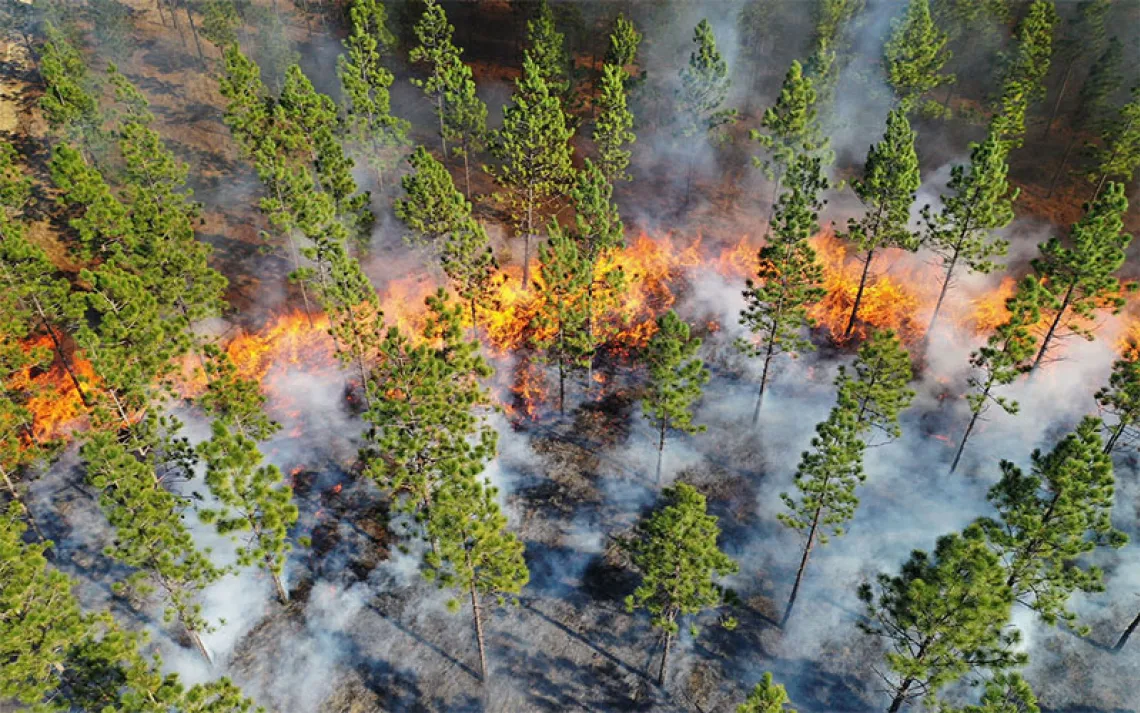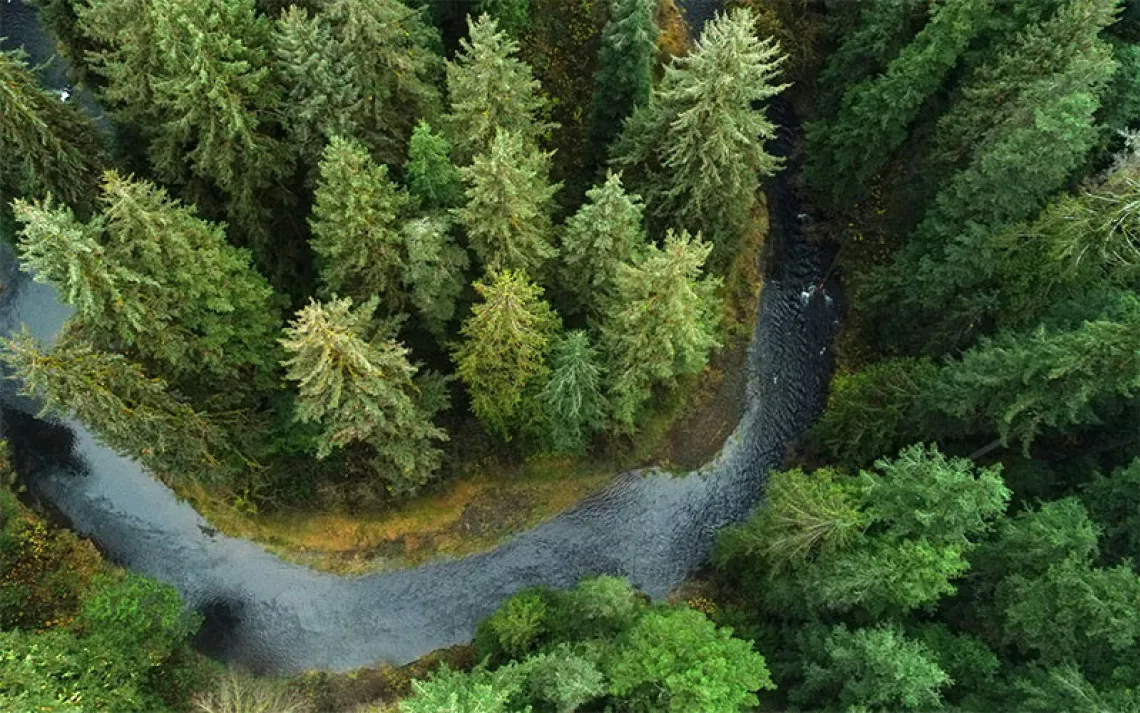The Giving Tree
Ancient bald cypress trees’ rings are repositories of climate data

Photos courtesy of Dan Griffin (University of Minnesota)
Ancient bald cypress trees are natural archives of environmental variability—helping scientists better understand how ecosystems have previously responded to climate conditions. This is according to internationally renowned University of Arkansas dendrochronologist Dr. David Stahle. Stahle’s latest endeavor, the Ancient Bald Cypress Consortium for Research and Education (ABCC), aims to identify and protect those remaining ancient bald cypress stands—not only to preserve their abundant beauty and majesty, but also to maintain a public record of climate data that spans millennia.
The project has recently taken on new urgency as many scientists worry about the continued availability of climate research data under the Trump administration. What’s more, several legal swamp loggers operate near cypress forests, threatening trees that date back to the dawn of Christianity.
I talked with Stahle to learn more about dendrochronology’s link to climate action—and find out how trees’ inherent knowledge can benefit the earth. It didn’t take long to figure out why he’s known in tree-science circles as the “Lord of the Tree Rings.”
—Virginia Holman
Dendrochronology is defined as the science of dating tree-growth rings to the exact year of their formation. Many of us have felled a tree and counted the rings to determine a tree’s age. But what other data can be found?
Tree rings are formed each growing season; they are annual, and they encode the imprint of regional climate on the width of the ring. So that means you can cross-synchronize growth patterns back in time among hundreds of trees, or even thousands, in a given climate province. That’s the secret of dendrochronology; that’s really the essence of the dating method.
It’s spot-on to the year and the season in which they grow, and we know this is right because we’ve been tested blindly. People give us a piece of wood—they know when it dates—and we can determine that independently.
We can also [rely on tree rings to] identify geophysical events in our records, such as the eruption of Mt. Tambora in 1815, which shrouded Earth in the most dense dust veil in recorded human history and caused the “year without a summer” in New England. Tree rings also tell us how often droughts have occurred. They're used to help us determine how we should plan for dwindling water supplies in the west.
What does this information tell us about our climate future?
One of the great challenges of climatologists is to predict the future climate based on anthropogenic forcing, which basically means considering humans’ impact on climate. Hydrologists and climatologists are interested in paleo-climactic record provided by dendrochronologists because it places modern times in [the context of] the proper natural background. They’re asking, “What’s the range of drought and wetness variablility in the past compared with what we’re seeing today?” In many areas of the world, tree-ring data show that the range of variability is much greater today than it was in the past.
How so?
For example, in the boreal forests of the circumarctic, the range of variability we now see exceeds anything in the last 1,000 years, and in some areas since even longer. Bristlecone pine are showing a surge in growth that hasn’t been seen in 3,000 years, due to accelerated warming.
In addition, we’re observing a trend, thanks to tree rings, in the eastern United States of increased wetness, which has been occurring since colonial times. That’s an interesting thing climatalogically; it has practical planning implications for society and for high-density areas like New York City.

Dendrochronologist Dr. David Stahle wades into North Carolina’s Black River to get closer to ancient bald cypress trees whose origins date to the dawn of Christianity.
Why are you focusing your current efforts on a single species of old-growth tree: the ancient bald cypress?
In the 1980s, with the help of the fine people at the North Carolina Nature Conservancy, we were able to core sample and identify some of the oldest living trees on Earth: the ancient bald cypress. Along the Black River [in North Carolina], there are 1,800-year-old and older bald cypress trees standing shoulder to shoulder. With our tree-ring data, the conservancy was able to protect several thousand acres of this ancient forest. But the area of old-growth trees on the Black River alone extends at least another 4,000 acres, and it includes areas that are being developed and actively logged. How many people realize there are trees in there that were alive at the dawn of Christianity? In addition, we can plan to map and protect the last remaining ancient cypress stands, throughout their natural range, from Virginia to Guatemala. The ABCC will allow people to participate in the preservation of some of the remaining fabric of original America, and in a way to stand alongside such giants of conservation like Muir and Roosevelt.
No wonder you’re known as the “Lord of the Tree Rings.
Yes [laughs], but I’ve also been called worse.
Such as?
Deadwood!
 The Magazine of The Sierra Club
The Magazine of The Sierra Club



